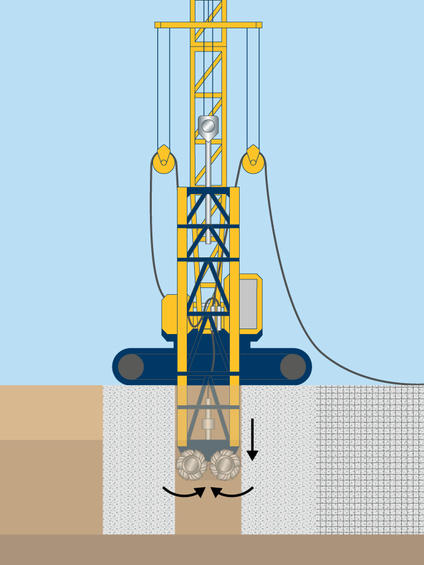Vertical panels are excavated under stabilising slurries using mechanical/hydraulic clamshell grabs or hydromill cutters to form a continuous cut-off, retaining and/or structural wall.

Common uses
Process
Diaphragm walls are constructed using grabs or cutters to create a narrow trench excavation into the ground. The trench is supported be an engineered slurry. Generally diaphragm walls are made from reinforced concrete, though unreinforced walls can also be used. Joints in adjacent panels are formed using either an over-cut (secant) technique or via temporary stop-ends.
Keller offer diaphragm walls in a range of thicknesses from 450-1500mm which can be excavated to depths of 100m.
Advantages
Quality assurance
Keller has a fleet of specialist wall excavation and construction equipment to complete all types of diaphragm wall and load bearing elements (LBE barrettes).